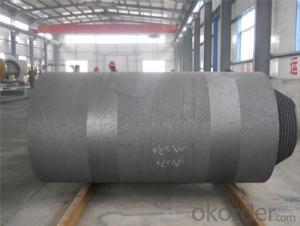When you’re in the market for graphite electrodes, you’re diving into a world of metallurgy, carbon allotropes, and electric currents. It’s a fascinating journey, but it can also be a bit overwhelming if you’re new to the game. Fear not, because I’m here to guide you through the process with a comprehensive, yet approachable, look at what you need to know to make the best purchase for your needs.
First things first, let’s talk about what graphite electrodes are. They’re essentially long, cylindrical rods made from high-quality graphite. These rods are used in electric arc furnaces (EAFs) for steel production, where they play a crucial role in melting the scrap metal. The heat generated by the electric current passing through the electrodes is what does the trick. It’s a process that’s both ancient and modern, a dance of science and industry that’s been refined over the years.
Now, before you start browsing through catalogs and websites, it’s important to understand the different types of graphite electrodes available. There are three main categories:
1. Standard electrodes: These are your basic workhorses, designed for general use in EAFs. They’re reliable and cost-effective, but they might not be the best choice for every situation.
2. High-power electrodes: As the name suggests, these are designed for high-power applications. They’re more efficient and can handle higher currents, but they come with a higher price tag.
3. Ultra-high-power electrodes: These are the top of the line, offering the highest efficiency and performance. They’re also the most expensive, but for some applications, they’re worth every penny.
Next, you’ll want to consider the diameter of the electrodes. The diameter affects the current capacity and the melting efficiency of the furnace. Smaller diameter electrodes are more cost-effective, but they might not be suitable for larger furnaces or high-production environments. Larger diameter electrodes, on the other hand, can handle more current and are better suited for heavy-duty applications.
The quality of the graphite is also a critical factor. High-quality graphite is more resistant to oxidation and has a longer lifespan, which can save you money in the long run. Look for electrodes made from needle coke, a type of carbon that’s particularly well-suited for this purpose.
Another thing to keep in mind is the density of the graphite. Higher density graphite is more durable and can withstand the rigors of the EAF environment better than lower density graphite.
Now, let’s talk about the manufacturing process. The way the electrodes are made can have a significant impact on their performance. Look for manufacturers that use a high-temperature calcination process, as this can result in a more robust and consistent product.
When it comes to purchasing, you have a few options. You can buy directly from the manufacturer, which can be cost-effective but might require a larger order. Alternatively, you can go through a distributor or a third-party supplier, which might offer more flexibility in terms of order size and delivery times.
One thing to watch out for is the quality of the supplier. Not all suppliers are created equal, and some might cut corners when it comes to quality control. Do your research and read reviews to ensure you’re getting a reliable product.
And finally, let’s talk about the future. As the world moves towards more sustainable practices, the demand for recycled and sustainable graphite electrodes is on the rise. Keep an eye on this market trend and consider investing in products that align with your values and the direction of the industry.
In conclusion, buying graphite electrodes is a decision that requires careful consideration of several factors, including type, diameter, quality, manufacturing process, supplier quality, and market trends. By taking the time to understand these aspects and making an informed choice, you can ensure that you’re getting the best product for your needs. And who knows, you might even find a passion for the intricacies of metallurgy along the way.

